Home / Destinations / Japan / The Best Things to Do in Koyasan

The small town of Koyasan is nestled deep within the cedar forests of Wakayama Prefecture, around an hour and a half south of Osaka. One of the most sacred towns in Japan, there are plenty of things to do in Koyasan.
Also known as Mount Koya, Koyasan is the birthplace of Shingon Buddhism in Japan. As a result, this ancient temple-filled town is considered to be one of the most sacred places in Japan.
In the 9th century a monk by the name of Kobo Daishi brought Shingon Buddhism to Japan from China. It was in what is now the town of Koyasan that Kobo Daishi founded the first Shingon Buddhist temple in Japan.
To this day Kobo Daishi remains a hugely venerated holy figure. His body lies at rest in Koyasan’s spectacular and solemn Okunoin Cemetery, the largest cemetery in Japan.
Kobo Daishi’s mausoleum has been a site of pilgrimage in Japan for over 1000 years. The Kumano Kodo, the network of pilgrimage routes that passes through Koyasan, was declared a UNESCO World Heritage site in 2004.
Surrounded by beautiful forested mountains, the town of Koyasan grew around Danjo-garan, Kobo Daishi’s original Shingon temple that was established in 816.
Today there are over 117 temples in Koyasan dedicated to Shingon Buddhism in a town with a resident population of around 3,000 people.
Koyasan is located deep amongst the forests in the east of Wakayama Prefecture. The remote town lies around 35 miles east of Wakayama City, the capital of the prefecture, and 50 miles south of Osaka.


Getting to Koyasan by public transport is not exactly straightforward.
The easiest way to reach Mount Koya is by starting from Osaka. The whole journey typically takes just under two and a half hours. Because of this we’d recommend staying overnight to get the most out of a trip to Koyasan.
From Osaka’s Namba Station it’s around an hour and a half train journey on the Nankai-Koya line to Gokurakubashi Station which is just north of Koyasan.
There are direct trains to Gokurakubash from Namba, but many also require a transfer on the way at Hashimoto station, which adds an extra 20 minutes or so to the journey.
Once at Gokurakubashi station, board the cable car for the short trip up to Koyasan Station. From there it’s then a ten minute bus ride into the centre of Mount Koya.
You can buy a Koyasan World Heritage Ticket in Osaka that covers the entire cost of a round trip to Koyasan.
The Koyasan World Heritage Ticket covers the return train trip to Gokurakubashi Station from Osaka’s Namba Station, a round trip on the cable car to Koyasan Station, as well as all local buses within Koyasan.
The Koyasan World Heritage Ticket is valid for two days and costs ¥3,140. The ticket can be bought at any major station operated by Nankai in Osaka.
The Koyasan World Heritage Ticket also includes discounts on various attractions in Koyasan. You can buy a physical Koyasan World Heritage Ticket at Osaka’s Namba Station or any other station on the Nankai Railway.
You can also buy a digital version of the Koyasan World Heritage Ticket on your smartphone. It’s a slightly convoluted process, but you can find the link to the QR code and more information here.
By far the easiest way to get to Koyasan is by car.
If you’d prefer to drive to Koyasan there are several car hire companies based at Kansai International Airport as well as in Wakayama City.
We use Discover Cars to find the best deals on car hire whenever we need take a road trip.
Find the best prices for car hire in Japan on Discover Cars here.
Be aware that to hire a car and to drive in Japan you will need to obtain an International Drivers Permit from your home country before arriving in Japan.
As it’s a bit too far for a day trip from Osaka, Koyasan is well worth an overnight stay.
Many of Koyasan’s temples offer overnight accommodation, and this is one of the best places to experience a temple stay in Japan. A deeply spiritual and traditional experience, a temple stay in Koyasan will be an unforgettable event.

Over fifty temples in Koyasan offer accommodation, called shukubo in Japanese.
The temples of Mount Koya have offered accommodation to pilgrims for centuries. A temple stay will allow you to sample the traditional lodgings and lifestyle of Koyasan’s monks.
The accommodation at a temple stay will be traditionally Japanese – such as tatami mats, futons and shared bathrooms – but they are far from primitive.
Evening meals and breakfast will be a multi-course vegetarian or vegan feast, based on traditional Buddhist cuisine called shojin ryori. You may also be invited to take part in or observe the monk’s morning prayers or meditation.
Some of the most popular temples to stay at in Koyasan are Syukubo Ekoin Temple, Shukubo Fudoin, and Yochi-in.
→ You can search for more temple stays in Koyasan on Booking.com here.
If you’d prefer to stay in more conventional accommodation there are also a handful of excellent guesthouses in Koyasan.
You can search for accommodation in Koyasan here but if you need a few suggestions here are a few guesthouses that we recommend:
With the choice of either traditional Japanese tatami rooms or Western-style rooms, Koyasan Guest House Tommy is perfectly located in the heart of Koyasan. The lovely staff also provide an excellent breakfast.
Hachi Hachi Guesthouse is located next to Koyasan’s Daimon Gate in the west of the town. The owner speaks perfect English and will go out of his way to help guests. Keep an eye out too for the two resident cats.
The Guest House Suzumeno Kakurembo also features super-friendly staff, good-sized traditional Japanese rooms and is in a great location. There’s also an excellent restaurant on site too.
Koyasan sits high in the forests and mountains of Wakayama. The entire town is less than four kilometres long, and at the western edge of Koyasan stands a phenomenal bright vermillion Daimon Gate. This stunning gate marks the entrance into Koyasan.
At the opposite end of the town is Koyasan cemetery, or Okunoin, a huge and deeply spiritual site that sprawls deep into the surrounding forest. Read on to discover the best things to do in Koyasan.

At the heart of Koyasan are two main iconic sites, Danjo-garan and Kongobuji. Danjo-garan is the site of the first temple built by Kobo Daishi in the 9th century.
Shrouded by the huge tall cedar trees that gently wrap themselves around the grounds, it is easy to see why Kobo Daishi chose this as the place to base his quest for spiritual enlightenment.
The entrance to Danjo-garan is marked by another enormous Daimon gate. Behind the gate stands the main Kondo Hall, where major ceremonies are held, and the towering two storey Daito Pagoda.
Decorated in brilliant bold vermillion, the Daito Pagoda is one of Koyasan’s most famous landmarks.
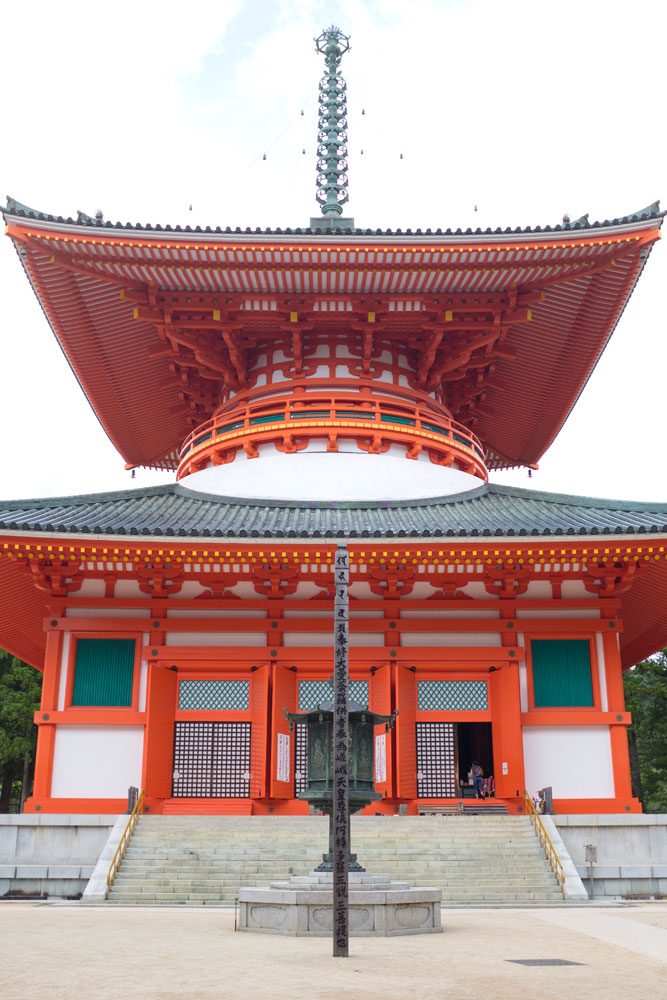
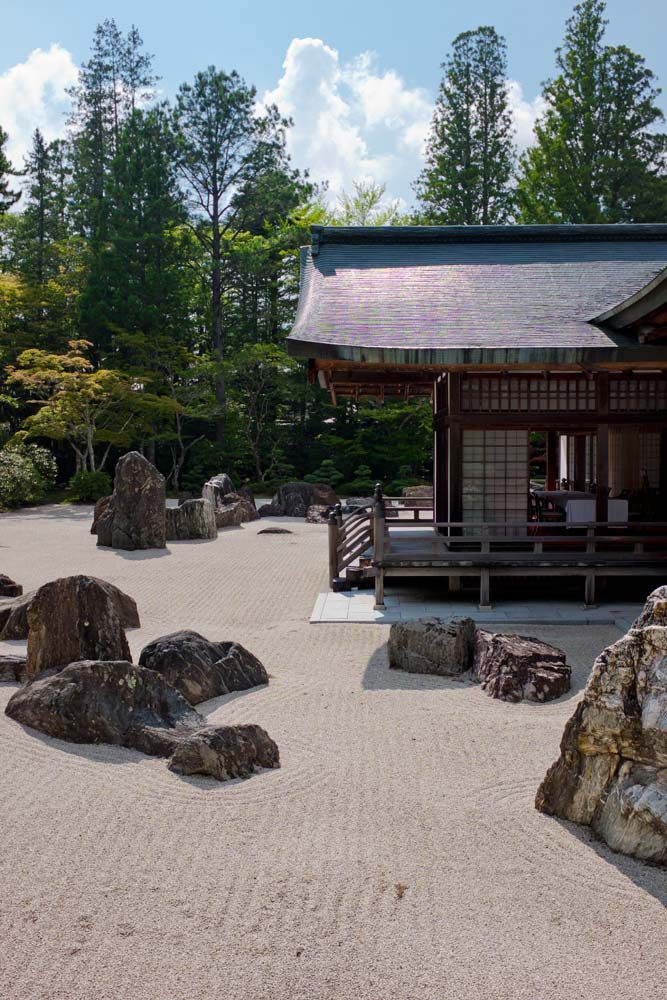
The Daito Pagoda at Danjo-garan and and the Banryutei rock garden, at Kongobuji Temple
A short walk away is Kongobuji Temple. Kongobuji was originally built by Toyotomi Hideyoshi, a legendary and merciless feudal lord from Japan’s Sengoku period in the 16th century. The temple complex later became the headquarters of Shingon Buddhism in Japan.
Kongobuji Temple features a beautiful and elegant interior. The main hall’s interior includes exquisitely decorated golden sliding screens that depict classic Japanese rural scenes of snow covered willow trees and low flying cranes.
In the temple’s courtyard is the beautifully serene Banryutei rock garden. Constructed in 1984, Banryutei is the largest rock garden in Japan.
Amongst the many temples of Mount Koya is the Tokugawa Clan Museum, a shrine dating back to 1643 dedicated to two Tokugawa shogun.
Both shogun’s remains are actually located elsewhere in Japan; the mausoleum was built here deliberately so that the shogun’s family had a grave close to Kobo Daishi at Okunoin.

The Reihokan Museum was built as a way to display some of the vast collection of hugely important Buddhist icons, scriptures and artworks owned by Kongobuji and various other temples in Koyasan.
Amongst the thousands of items on display are several National Treasures and Important Cultural Properties.
Spread across three main exhibition halls, some of the ancient statues and artworks on display date back over 1,000 years to the founding of Koyasan.
The permanent collection is updated regularly alongside seasonal temporary displays from the museum’s collection of over 78,000 items.
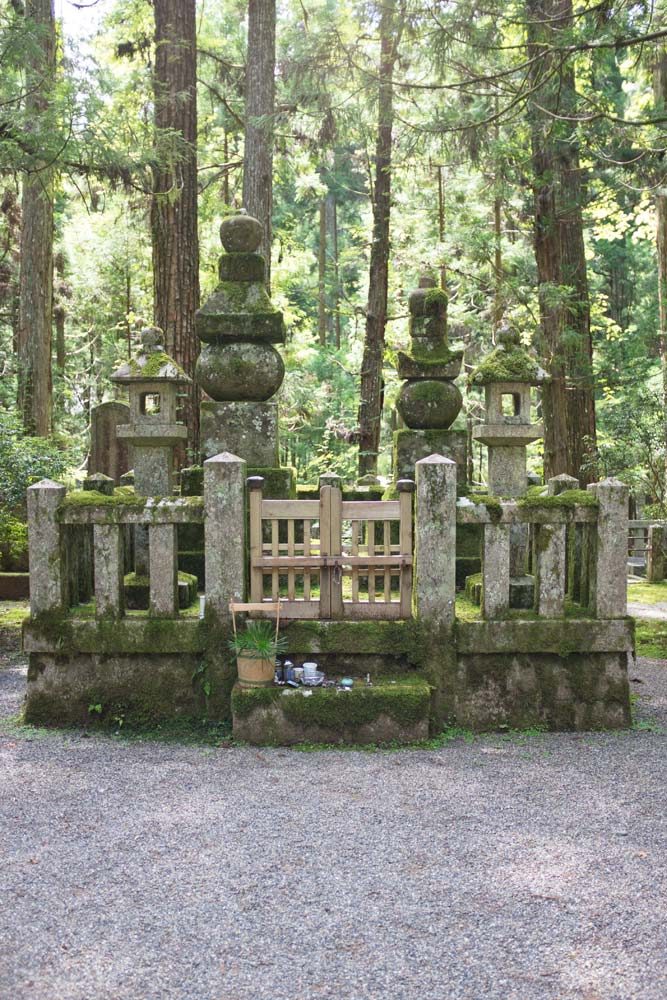
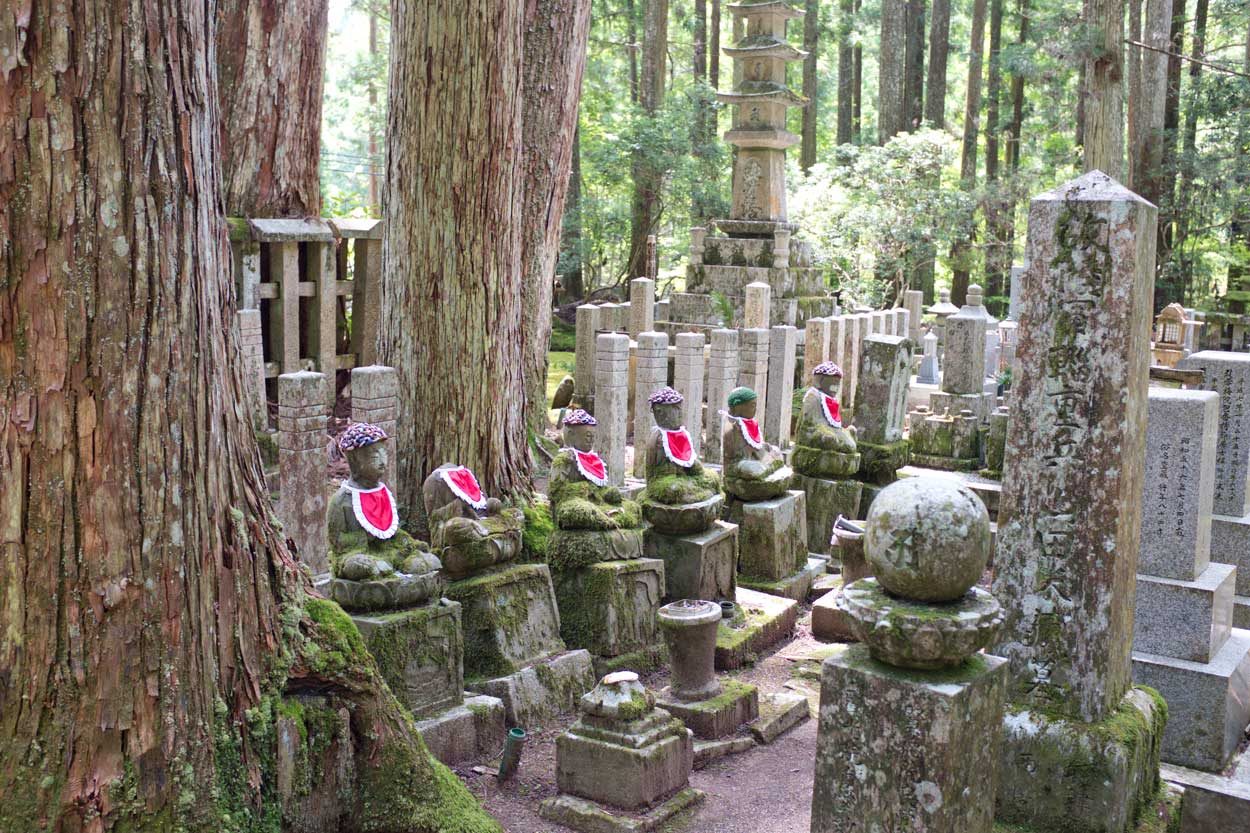
Situated at the eastern end of town is Okunoin cemetery. The final resting place of Kobo Daishi, Okunoin is one of the most sacred sites in Japan and a remarkably atmospheric and ethereal place.
The largest cemetery in Japan, there are over 200,000 graves in Okunoin, all set within the peaceful beauty of the Koyasan forest.
Entered at the Ichinobashi Bridge just on the edge of town, Okunoin cemetery instantly surrounds you.
The graveyard consists of thousands of torii gates and tombstones, some modest and others incredibly grand.
Feudal lords and many prominent monks are amongst those buried here. Many jizo statues are dressed in bright red bibs and hats to keep the spirits warm in the next life.
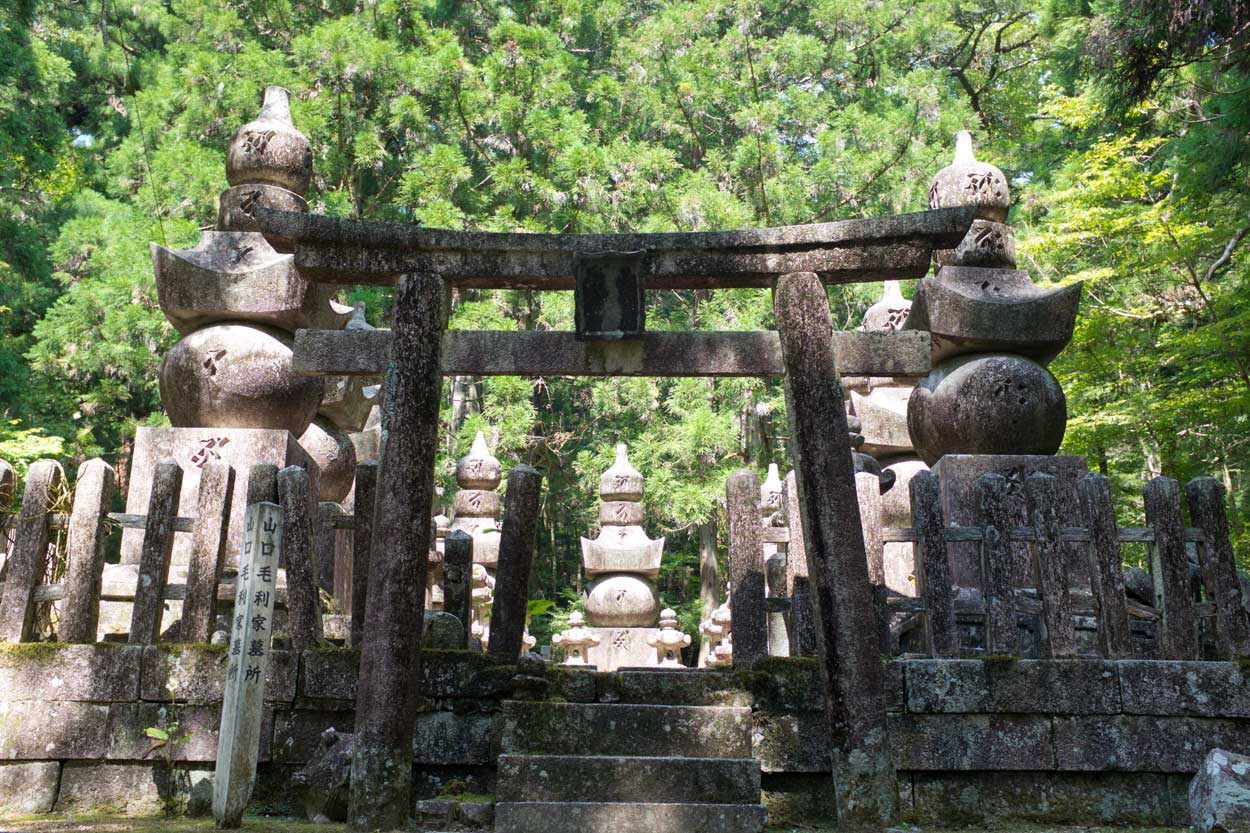
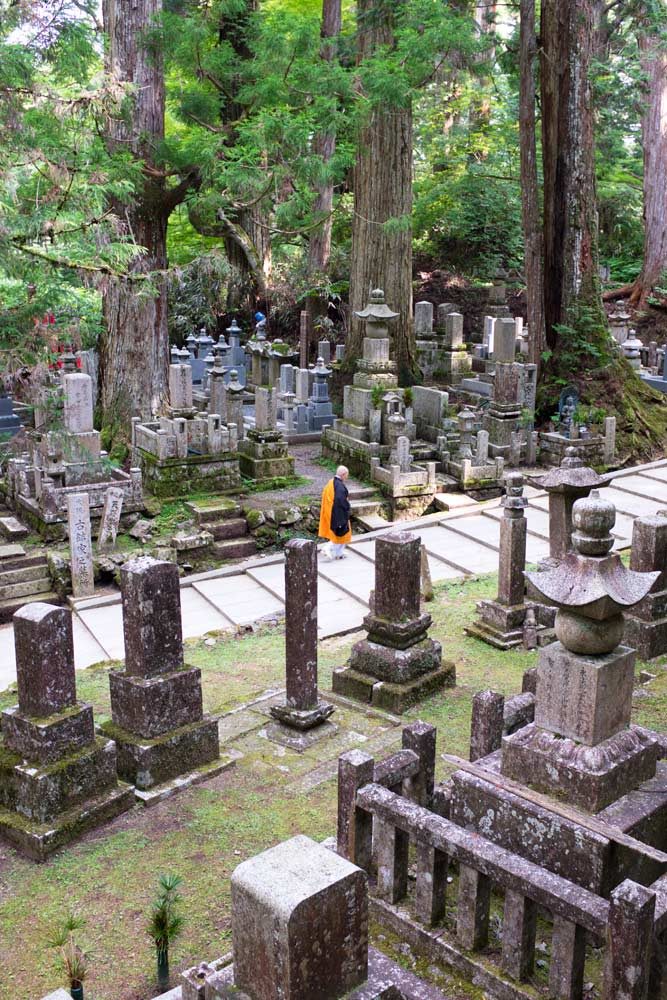
A two kilometre walk through the cemetery ends at Okunoin Temple, the mausoleum of Kobo Daishi. This is often the ultimate destination for many of the pilgrims who hike the Kumano Kodo trail.
Reached by crossing the Gobyonohashi Bridge over a stream, this is the most sacred part of the cemetery. Monks can be seen bringing offerings of food to Kobo Daishi twice a day every day.
Next to the mausoleum is Torodo Hall, the main worship hall at Okunoin, filled with over 10,000 lamps that are permanently alight. A visit at early morning or sunset is when Okunoin cemetery is at it’s most enthralling.

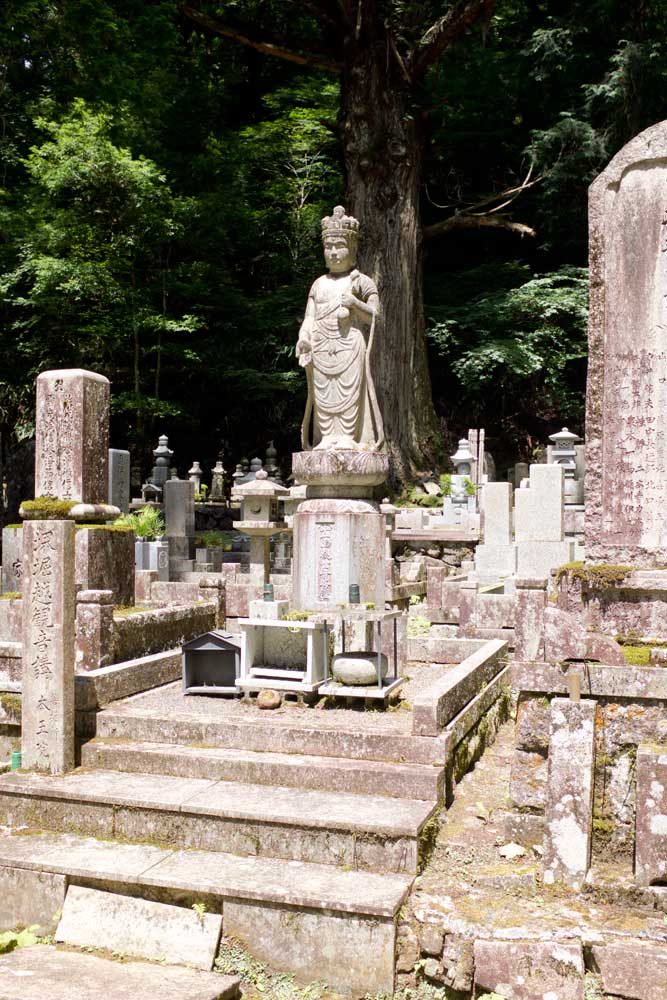
Koyasan Cemetery
One of the best things to do in Koyasan is to take a night tour of Okunoin cemetery. Night tours can be arranged and reserved here, costing between 1800-2000 yen.
A guide will take you through the cemetery in the dark of night lit by the lanterns that line the route to the Kobo Daishi mausoleum.
If you plan to visit the cemetery at night without taking a night tour bear in mind that beside the lanterns Okunoin is very poorly lit and very little of the graveyard is visible without a torch.
Mount Koya is a fairly quiet town and things tend to close pretty early, not long after the visitors disperse. As a result there’s a relatively small selection of restaurants to choose from in Koyasan.
Here are a few places to eat in Koyasan that we recommend:
Located a few minutes away from Danjo-Garan temple, Kadohama Gomatofu, offers a menu of fantastic vegan and tofu dishes in keeping with the Buddhist tradition of shojin ryori.
In the centre of Koyasan, Hanabishi has a more extensive menu that features sublime Japanese meals consisting of small dishes of tofu, fresh fish, and locally grown seasonal vegetables. Expect to have to queue for a table during busy periods.
At the far western end of the town, just next to the Daimon Gate, is Tsukumo, which specialises in a number of traditional (and affordable) Japanese staples such as udon noodles and kamameshi. They also have menus in English.
If you’ve liked this post please share it on the socials:
Follow our travels on Instagram here, and keep up to date with our latest posts on Facebook here.

Please note that this post contains some affiliate links. If you click these links and go on to make a purchase we will earn a small commission at no extra cost to you.
© WhereYoureBetween.com – 2023
Cookies help us deliver our services.
By continuing to browse this site, you agree to our use of cookies.
There's a World Out There. Let's Go!
Sign up to our email newsletter for a monthly(ish) dose of wanderlust